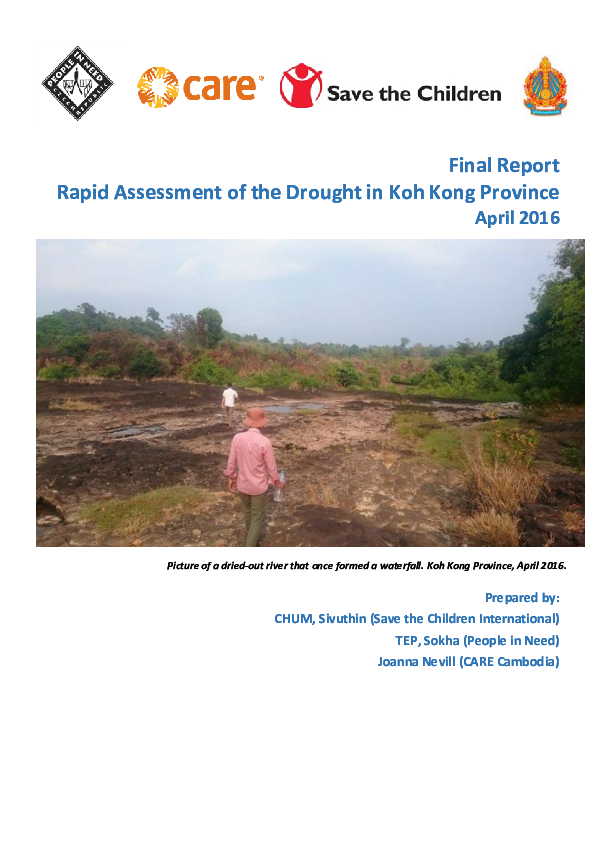
Reports
Rapid Assessment of the Drought in Koh Kong Province: Final report (April 2016)
Publication year:
2016
English
Format:
pdf (779.8 KiB)
Publisher:
CARE International,PIN, People in Need,Save the Children
El Niño is an abnormal weather pattern caused when warm water from the western Pacific Ocean flows eastward. It results from variations in ocean temperatures in the Pacific around the equator and occurs on average every two to seven years. Cambodia is currently experiencing the effects of an El Niño event, which includes significantly fewer rainfall patterns, warmer weather and delayed or shorter monsoon rains. The 2015-16 El Niño is projected to be the worst on record in recent years, or of a similar scale to that of 1997-98.
The consequences of this slow onset disaster are that the most vulnerable populations with limited resilience options will be affected. The effects of this current dry spell are likely to endanger livelihoods, harvests, and the health and nutritional status of rural poor households relying on subsistent agriculture or fishery activities in the most-affected provinces. At this time it is predicted that 93,503 families in Cambodia will be affected by the drought.
In addition, the World Health Organization (WHO) has estimated that worldwide, El Niño-related weather including severe drought, flooding, heavy rains and temperature rises will put 60 million people at increased risk of food insecurity and malnutrition, disease outbreaks, acute water shortages, and disruption of health services. In January 2016, the Director of WHO’s Emergency Risk Management & Humanitarian Response Department warned that in order to prevent unnecessary deaths and illnesses, governments must invest in strengthening their preparedness and response efforts immediately.
Read full abstract
Authors
View & Download
Document information
Authors
Format
Content type
Country
Region
Rights
© Author/Publisher
Found a mistake? Help us improve!
If you have noticed a document assigned to the wrong author or any other inaccuracies, let us know! Your feedback helps us keep our data accurate and useful for everyone.
Share
Link
